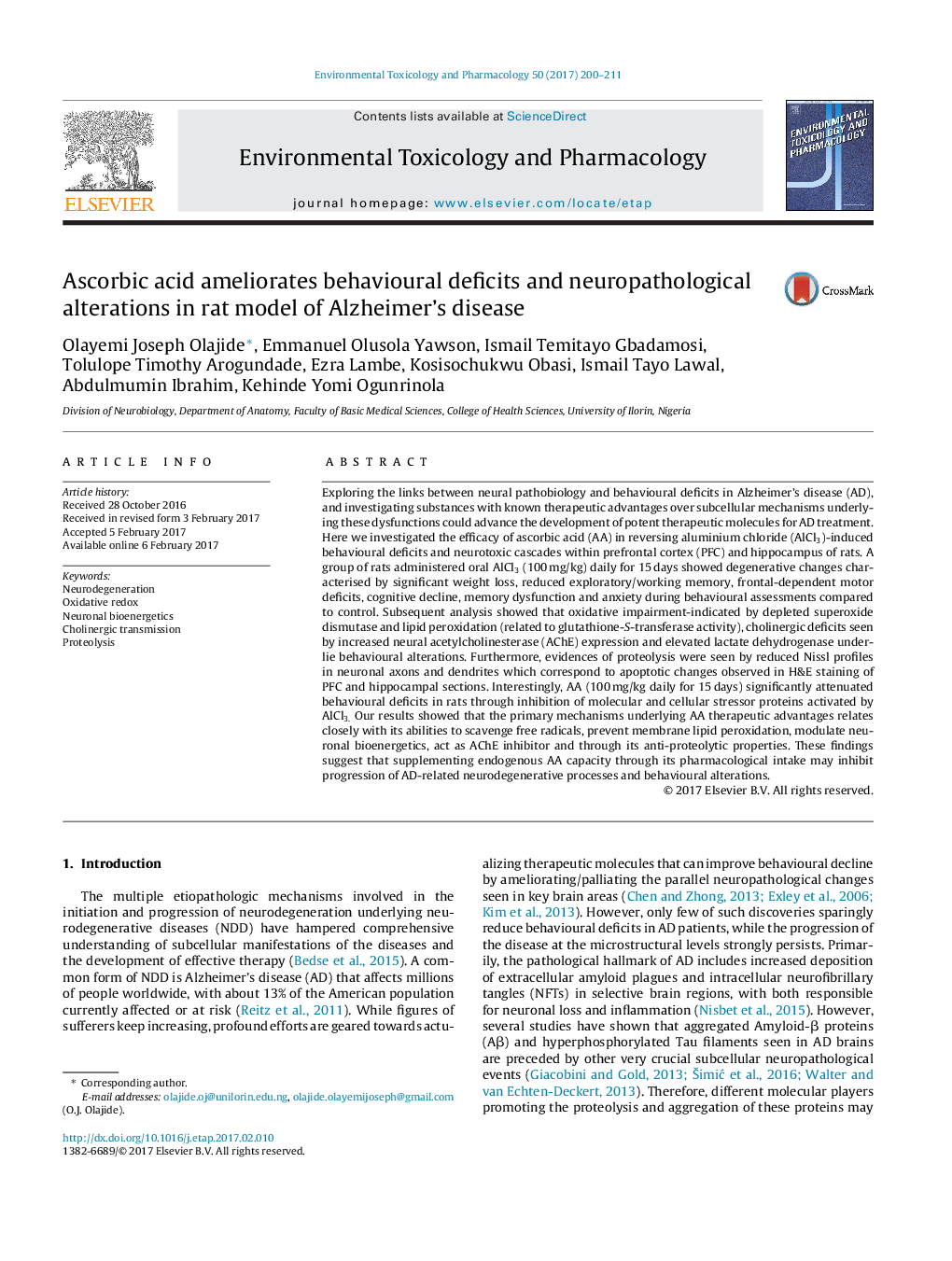| کد مقاله | کد نشریه | سال انتشار | مقاله انگلیسی | نسخه تمام متن |
|---|---|---|---|---|
| 5559722 | 1561694 | 2017 | 12 صفحه PDF | دانلود رایگان |
- Inhibitory properties of ascorbic acid on neuropathologic lesions were considered.
- Ascorbic acid reverses behavioural, neurochemical and molecular degeneration.
- Mechanism of inhibition relies mainly on neural oxidative redox balancing.
Exploring the links between neural pathobiology and behavioural deficits in Alzheimer's disease (AD), and investigating substances with known therapeutic advantages over subcellular mechanisms underlying these dysfunctions could advance the development of potent therapeutic molecules for AD treatment. Here we investigated the efficacy of ascorbic acid (AA) in reversing aluminium chloride (AlCl3)-induced behavioural deficits and neurotoxic cascades within prefrontal cortex (PFC) and hippocampus of rats. A group of rats administered oral AlCl3 (100Â mg/kg) daily for 15Â days showed degenerative changes characterised by significant weight loss, reduced exploratory/working memory, frontal-dependent motor deficits, cognitive decline, memory dysfunction and anxiety during behavioural assessments compared to control. Subsequent analysis showed that oxidative impairment-indicated by depleted superoxide dismutase and lipid peroxidation (related to glutathione-S-transferase activity), cholinergic deficits seen by increased neural acetylcholinesterase (AChE) expression and elevated lactate dehydrogenase underlie behavioural alterations. Furthermore, evidences of proteolysis were seen by reduced Nissl profiles in neuronal axons and dendrites which correspond to apoptotic changes observed in H&E staining of PFC and hippocampal sections. Interestingly, AA (100Â mg/kg daily for 15Â days) significantly attenuated behavioural deficits in rats through inhibition of molecular and cellular stressor proteins activated by AlCl3. Our results showed that the primary mechanisms underlying AA therapeutic advantages relates closely with its abilities to scavenge free radicals, prevent membrane lipid peroxidation, modulate neuronal bioenergetics, act as AChE inhibitor and through its anti-proteolytic properties. These findings suggest that supplementing endogenous AA capacity through its pharmacological intake may inhibit progression of AD-related neurodegenerative processes and behavioural alterations.
Journal: Environmental Toxicology and Pharmacology - Volume 50, March 2017, Pages 200-211
